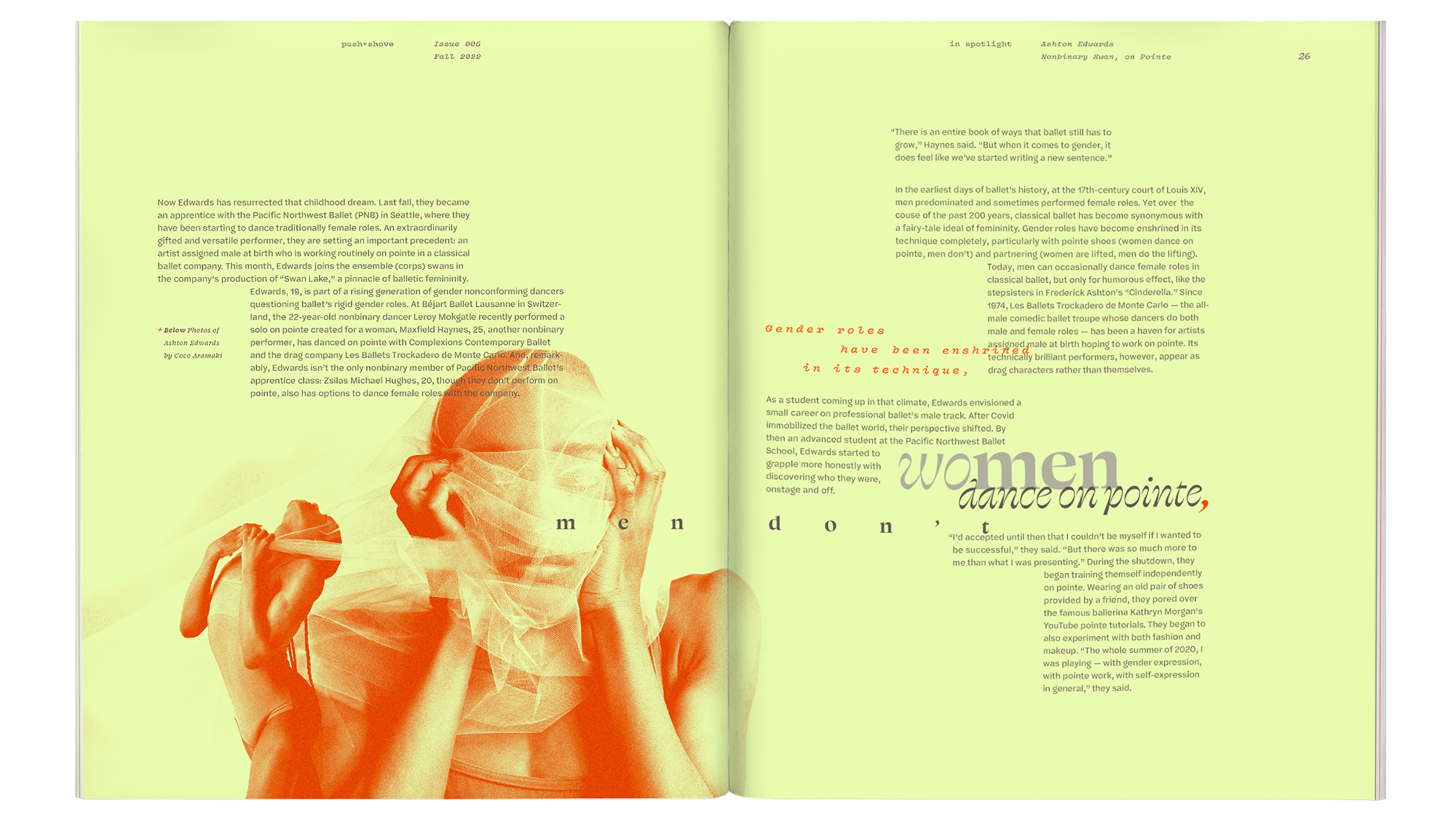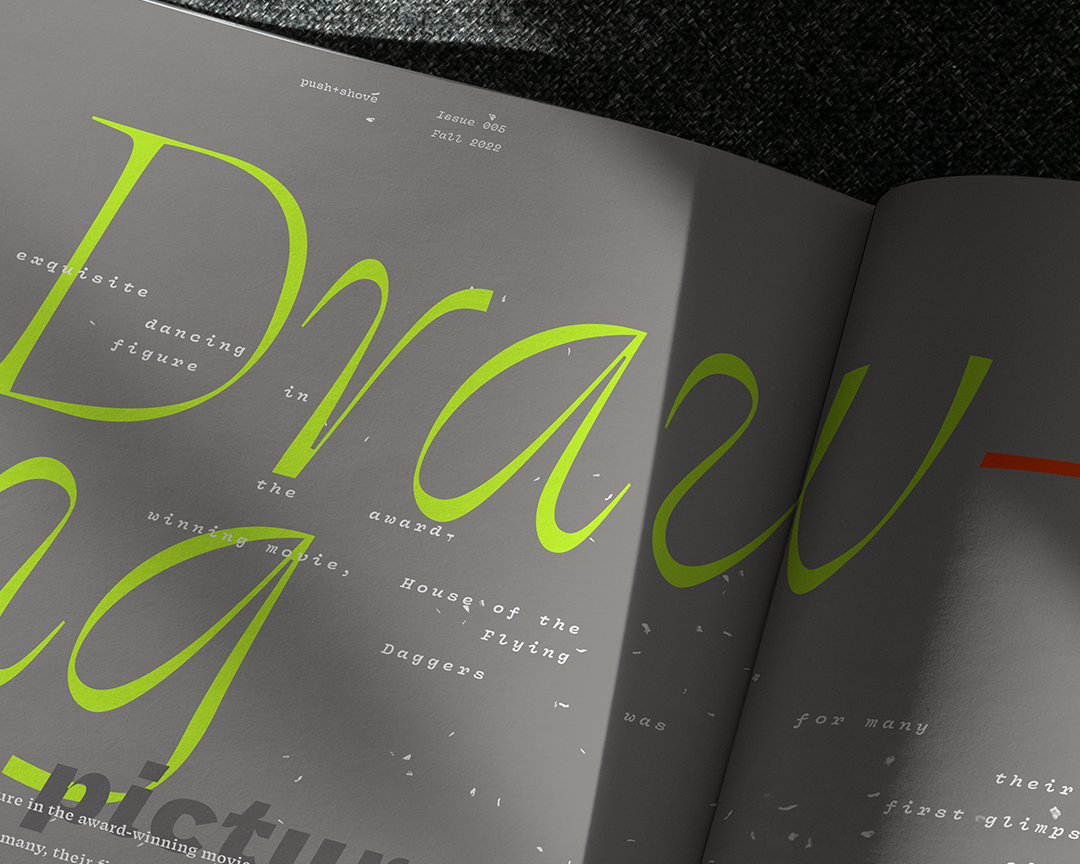
Push+Shove Magazine
TYPOGRAPHY III
Promoting diverse and inclusive perspectives, it puts the disruptors of today’s dance landscape centerstage; the dancers, choreographers, directors, and more who refuse to keep dance and its culture stuck in the confines of the past.








Who is Push+Shove?
︎ Expressive
︎ Disruptive
︎ Propelling
︎ Rebellious
︎ Rhythmic
︎ Diverse
︎ Experimental
︎ Unexpected
︎ Disruptive
︎ Propelling
︎ Rebellious
︎ Rhythmic
︎ Diverse
︎ Experimental
︎ Unexpected
︎ Stagnant
︎ Dull
︎ Pretentious
︎ Conservative
︎ Traditional
︎ Delicate
︎ Monotonous
︎ Dull
︎ Pretentious
︎ Conservative
︎ Traditional
︎ Delicate
︎ Monotonous
Initial wordmark sketches

Final wordmark
Click to Pause.






Abrasive colors

Rebellious and dance-like typography

Wide page proportions mimic a stage



Feature articles


Playing with movement on the cover

Final Magazine









Sources
"Nonbinary Swan on Pointe" written by Margaret Fuhrer for The New York Times.
"Drawing Pictures in Motion" written by Maggie Foyer for Dance ICONS, Inc.
Featured dancers: Ashton Edwards and Yabin Wang.